India’s vast coastline, stretching over 7,500 kilometres, is a tapestry of crashing waves, golden sands, and vibrant spiritual energy. Along this dramatic edge of the land lie some of the country’s most revered temples, where the roar of the ocean provides a constant, natural chorus to the hymns of devotion. These aren’t just architectural marvels; they are sacred sites where the elements of nature and faith converge, telling epic tales that have withstood the test of time and tide. DHANUSH KUMAR writes about the most popular temples in India that stand proudly by the sea, each with a unique story to tell.
Somnath Temple, Gujarat
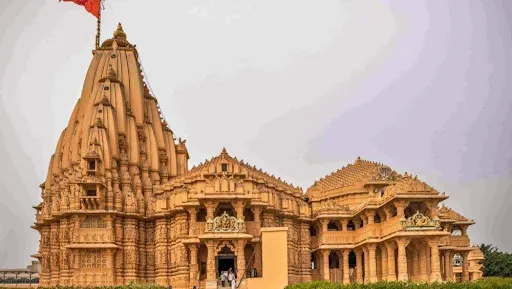
Perched on the shores of the Arabian Sea in Gujarat, the Somnath Temple is a powerful symbol of resilience and faith. As the first of the 12 sacred Jyotirlingas of Lord Shiva, its spiritual significance is immense. However, its history is equally compelling. The temple has been destroyed and rebuilt multiple times over the centuries, a testament to the unwavering devotion of its followers. The current structure, a breathtaking blend of Chalukya architecture and modern design, stands as a beacon of hope and an eternal reminder of the cyclical nature of destruction and rebirth. The evening aarti here, with the sound of the ocean waves in the background, is a truly mesmerizing experience.
Ramanathaswamy Temple, Tamil Nadu
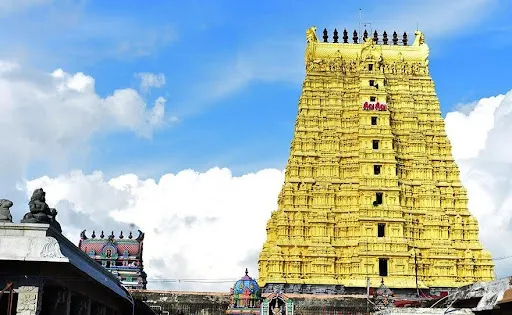
Located on the island of Rameswaram, the Ramanathaswamy Temple is one of the four Char Dham pilgrimage sites, making it a cornerstone of the Hindu faith. Legend has it that Lord Rama built the Ram Setu, a bridge connecting India to Sri Lanka, from this very place to rescue his wife, Sita. The temple is famed for its stunning architecture, particularly its corridors, the longest of any Hindu temple in India. With a total length of 3,850 feet and over 1,200 intricately carved pillars, walking through these halls is a humbling and awe-inspiring journey through history and mythology. Devotees also take a dip in the temple’s 22 sacred wells, or tirthams, which are believed to have healing properties.
Shore Temple, Tamil Nadu
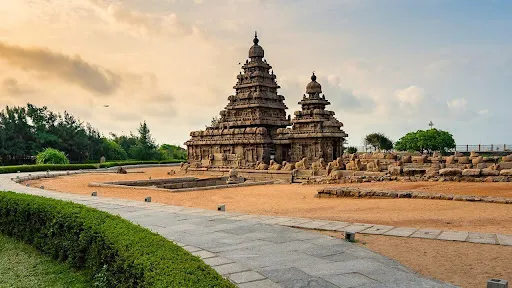
A UNESCO World Heritage Site, the Shore Temple at Mahabalipuram is an architectural gem of the Pallava dynasty. Built in the eighth century, this granite temple complex is one of the oldest structural stone temples in South India. It stands as a solitary survivor of what is believed to have been a City of Seven Pagodas, with the others having been lost to the sea. The temple’s intricate carvings depict deities, stories from Hindu mythology, and motifs of the Pallava era. Visiting the Shore Temple at sunrise or sunset is an unforgettable experience, as the golden light bathes the ancient stone, illuminating its timeless beauty against the backdrop of the turquoise Bay of Bengal.
Jagannath Temple, Odisha
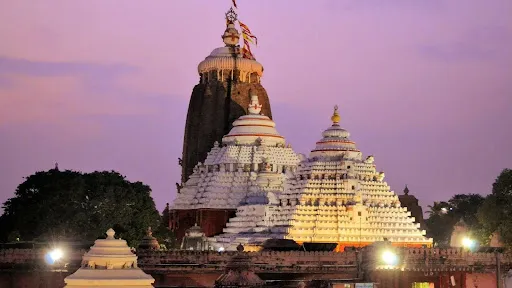
Puri, a coastal city in Odisha, is home to the majestic Jagannath Temple, a sacred site dedicated to Lord Jagannath, a form of Lord Vishnu. The temple’s towering spire is a prominent landmark, visible from the vast expanse of the Bay of Bengal. The temple’s history dates back to the 12th Century, and it is a vibrant centre of culture and spirituality. The annual Rath Yatra, where the deities are taken on a grand procession in massive, beautifully decorated chariots, is a global phenomenon, attracting millions of devotees. The temple’s mysteries, from its flag that defies the wind to the Mahaprasad that never runs short, add to its mystical allure.
Mrudeshwar Temple, Karnataka
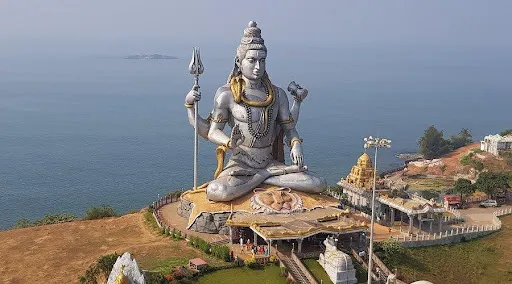
While many coastal temples boast ancient origins, the Murudeshwar Temple in Karnataka is a unique blend of old and new. The temple’s highlight is the 123-foot-tall statue of Lord Shiva, the second-tallest in the world, which dominates the skyline and offers a stunning view of the Arabian Sea from its perch on Kanduka Hill. The temple complex also features a towering gopuram with a modern elevator that takes visitors to the top for a breathtaking panoramic view. The temple is believed to be where a piece of the Atmalinga of Lord Shiva fell after being snatched by Ravana, adding a mythological layer to its modern-day grandeur.,
These temples are not just places of pilgrimage; they are vital cultural landmarks that connect India’s rich spiritual heritage to its stunning natural beauty. They are a testament to the fact that for centuries, the sea has not just been a boundary, but a bridge to the divine.





























